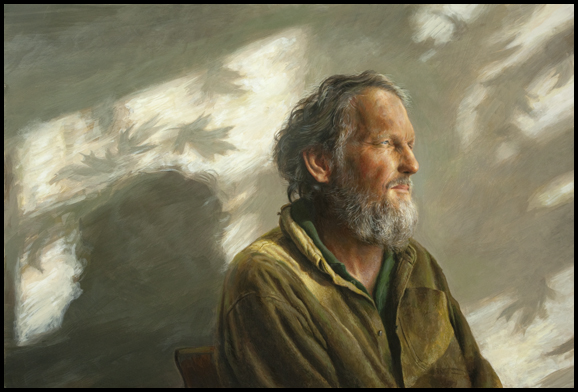
Paper delivered by Sam Knecht, Professor of Art, Hillsdale College,, Hilllsdale , MI
for a panel titled Leonardo's Legacy at the 2013 FATE Conference in Savannah, Georgia
I’m glad to be here among serious artists gathered to debate the place of drawing in undergraduate art programs. Every hallowed tradition ought to withstand occasional scrutiny. What can I offer?
I have taught drawing in college, in university, and in art school during forty years of teaching on the undergrad level. My duties have also ranged between painting and art history, so I hope I can bring useful perspective to this debate.
Once in a while I joke with my students that all I can draw are flies…..or maybe breath. Maybe I can draw upon past experience… I wish I could draw a crowd and keep their interest.
Let’s see how it goes with this crowd!
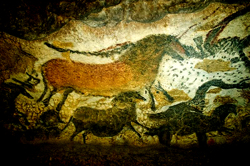
(slide: Cave painting, Lascaux)
In the beginning there was the mind….but also the hand.
Civilization is nothing without the circuitry that links the eye, mind, and hand. Civilization is nothing without the skilled hand.
Freehand drawing is the oldest evidence of human communication For the Paleolithic artist the act of drawing was never mere recreation. It was vital.
![]()
(slide: Iconoclastic image, Byzantine)
Throughout history there has been need for images of the world we see and wish to see. Sure, there have been epochs that fostered suspicion over the body’s sensibilities. We are reminded of Plato’s admonitions concerning the senses. 8th century Byzantine iconoclasm brought laws against image making. During the Reformation stained glass windows were smashed out of churches. The contemporary drift to marginalize training in drawing may be a new form of iconoclasm motivated by those who simply can’t draw. A celebrated Pop artist’s attempt to discredit the Old Masters by claiming they all resorted to lucida projection is unconvincing. Why can’t we imagine there are those who have been superior in their gifts and steadfast in their determination to command freehand mastery?
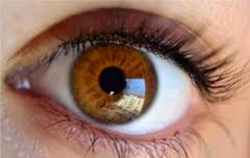
(slide: Human iris)
Let’s go to language briefly. Consider the saying, “Seeing is believing.” The meaning of that expression is deeply ingrained. Here’s a personal story: In my days as a university art student I shared a dorm room with a student who was blind since second grade.
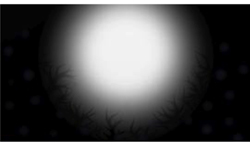
Slide: Blind iris/sunspot
Once in a while Rick would say, “I see what you mean.” Of course that startled me! But I quickly realized that what he intended was “I know what you mean.” Seeing and knowing have always been equated. Elsewhere we have the phrase “the naked truth.” It resonates because we require verification to be visual and uncovered.
Now let’s look at an image claiming to be something it is not.
This is how to draw a cylinder if you require it to conform to a conceptual definition. Look silly? It does satisfy a Platonic definition of a cylinder. It involves two perfect circles joined by two parallel sides.
![]()

(slide: isometric cylinder paired w/ Warhol Soup Can)
Why didn’t Andy Warhol choose that form for his soup cans?
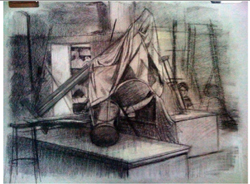
(Slide: Still life drawing Mike Manley)
One of the benefits of taking Drawing includes acquiring humility while false assumptions about visual truth are put aside. The student learns the brain keeps stored visual concepts that are flawed. In drawing class the serious student learns to slough off hazy notions while the optical image is increasingly understood. This path leads to empirical truth through studied observation. The student realizes that proportion doesn’t work by mental assumption but rather by careful visual measurement. He builds a kind of eyeball GPS into his vision. With drawing mastery the student acquires perspective in a larger sense, making him skeptical of untested assumptions. Critical thinking thus acquired arms the student with an inquiring mind capable of learning in other disciplines, not just art. And he learns to check his prior assumptions. It’s a healthy and humbling mental transformation.
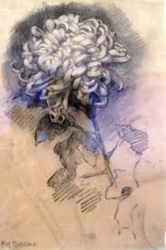
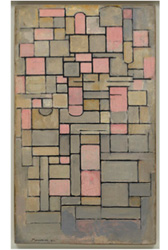
Chrysanthemum (c. 1908)/Composition 8 (1911) Mondrian
Every drawing produced by student or professional reveals inner spirit, whether the work is clumsy or proficient. When taught well, drawing is not just about representation; it goes further to nurture an aesthetic, compositional sense. Unifying an array of forms in a still life drawing develops the student’s ability to reconcile complexities into a coherent scheme.
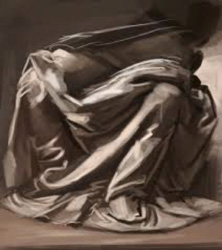
Leonardo - drapery study
I doubt the audience needs to be reminded of the Italian Renaissance term, “Desegno” simply explained as descriptive drawing. However, its greater meaning suggests simultaneous description and design. With the aims of Desegno observed nature is transformed into harmony of design within a broad compositional context. Thus abstract fundamentals of visual rhythm, implied relationship, and more are brought out. When the renaissance model of training is adopted, drawing is not limited just to acquiring observational skill (although that in itself is a worthy goal). It also opens up pathways to create all manner of forms feasible in any medium. The savvy draftsman knows he is extracting elements from the subject… in essence abstracting when you consider the Latin roots of the word “abstract.” This is not an authoritarian process. It is creativity propelled by the will of the artist to select and design.
Some may be surprised about the extent to which the saints of Modern Art were seriously involved with drawing. Drawing ability never blocked growth and innovation. One could argue it may have emboldened creativity by arming the artist both with skill and confidence.

Jeopardy parody image
Consider the drawing below by 20th century artists. Let’s see if you can match the images with the following names:
Albers
Brancusi
Calder
Cartier-Bresson
Judy Chicago
De Kooning
Diebenkorn
Duchamp
Kline
Henry Moore
Nevelson
Noguchi
Picasso
Pollock
Steichen
Warhol
(answers below)
1.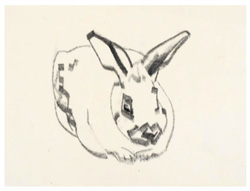
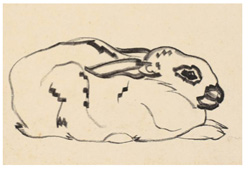
2.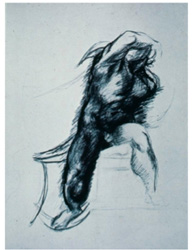
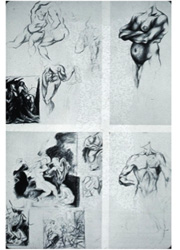
3.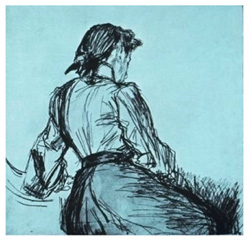 4.
4.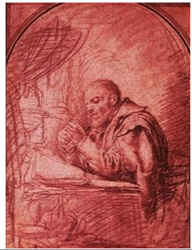
5. 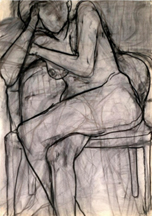 6.
6. 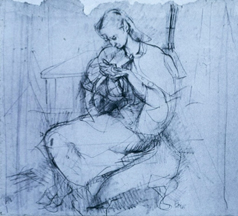
7. 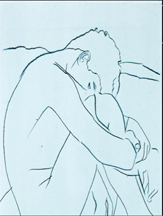 8.
8. 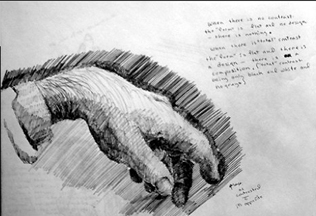
9. 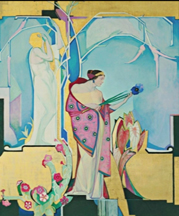 10.
10. 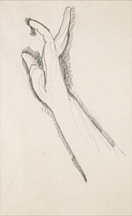 11.
11. 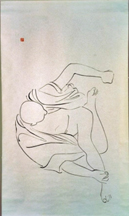
12. 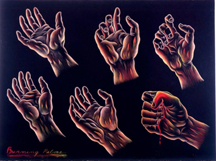 13.
13. 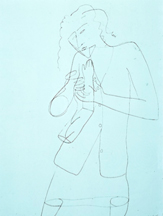
14. 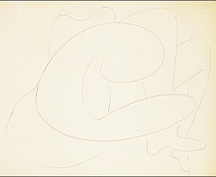 15.
15. 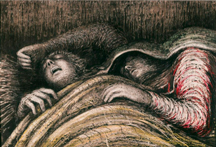
16. 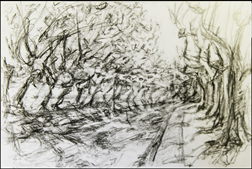
1- Albers
2 - Pollock
3 - Duchamp
4 - De Kooning
5 - Diebenkorn
6 - Kline
7 - Warhol
8 - Picasso
9 - Steichen
10 - Brancusi
11- Noguchi
12 - Judy Chicago
13 - Calder
14 - Nevelson
15 - Henry Moore
16 - Cartier-Bresson
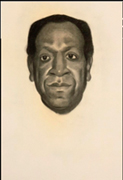
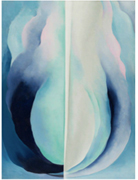
Georgia O’Keeffe)
Realization that these and other Modernists drew well in their formative years or even later on might seem like a dirty little secret. But it’s the truth. They all drew! I maintain that as they went on their innovative journeys they carried along mental storehouses of forms, rhythms, and use of space conditioned by drawing from observation. It’s not about the subject, but the process of RE-PRESENTING with artistic vision.
Let’s continue on the philosophical track for a moment longer. Whether we will admit it or not, we are offended or at least puzzled by bad drawing. Drawing that shows ineptitude in proportion is as unforgivable as a musician playing or singing out of tune. I’ve watched Reality TV’s “The Voice” while a young vocalist was sent home by pop music judges due to “intonation issues.” That’s code for lack of skill!
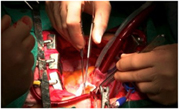
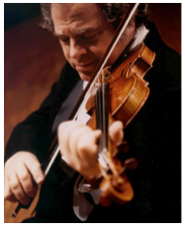
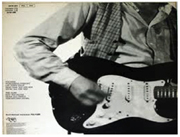
surgeon’s hands, Perlman, Eric Clapton
I assume that most of us share an experience of meeting a new person and being introduced as an artist. The default remark is “Oh, I can’t draw a straight line,” or “All I can draw are stick figures.” Such modest admissions reveal admiration of skill. Let’s for a moment consider that conventional wisdom might in fact be Wise. It is ingrained in the populace that artists can draw. Just like it is ingrained that surgeons can operate with exceptional skill, that Isaac Perlman can play Paganini with exceptional skill, and that Eric Clapton’s nickname of “Slowhand” is affectionately ironic. Marginalizing drawing skill is a form of professional wrist slashing! Shall we coach art majors in how cleverly they admit they can’t draw? Being able to draw and command the hand is an eternal source of satisfaction and wonder.
Let’s turn now to the practical side. Drawing well has propelled many a progressive invention from the idea stage into a physical reality. A couple of cases in point:
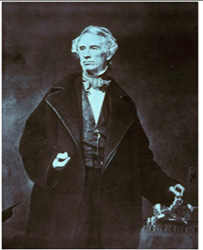
SFB Morse
Here is a man who excelled in painting and drawing within the stylistic conventions of his time.
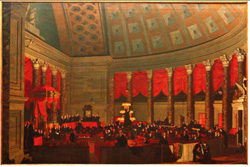
Hse. Representatives by SFB Morse
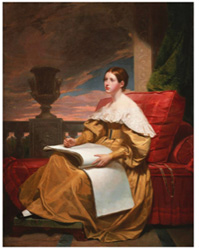
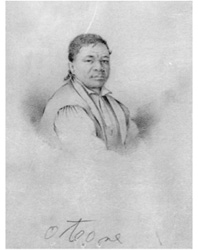
oil portrait by Morse/drawing by Morse
I submit that his mastery of drawing three-dimensional imagery enabled him to envision a unique mechanical, electromagnetic contraption. The key word here is “envision.” As you probably know he invented the telegraph. Success with the telegraph came at a time when he felt his love of painting was jilted by lack of recognition. He re-directed his energies into invention.
Here now are several of his drawings, including some that were included in his application to patent the telegraph.
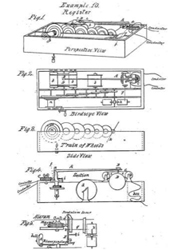
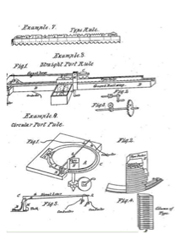
battery terminals diagram/ rail line wiring system
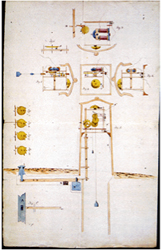
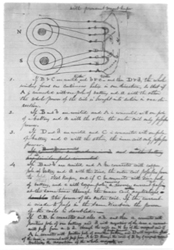
ink drawings of telegraph mechanics fr. Patent applicaton
I trust there are those among you that know about Morse Code and it’s “dits” and “dahs.” If Morse were alive today he might state that his Code is the progenitor of modern binary computer code. Just swap dits and dahs for ones and zeroes. A question for those whose faith lies in digital technology: could Morse have invented the telegraph and its language if he had been without visual talent? Like da Vinci before him his analytic mind reached for the tools of drawing to determine whether or not a concept could first be made and then made to work!
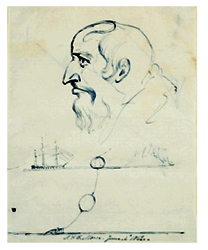
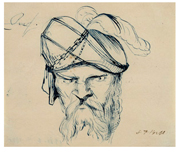
Morse sketch of head and ship laying cable man w/ turban
Drawing has always been fundamental to engineering machines. It begs the question where does aesthetic design end and engineering begin? In the best machines there is elegance in the way form serves function. I’ll bet that the form of your Mac or PC began on the drawing board. Visualization makes it possible!
Incidentally the Morse example of an artist veering away from an artistic life filled with difficulty and popular neglect probably sounds familiar. Only a fraction of art majors remain in art careers their whole lives. Should we deprive them of mental and physical skill that might lend itself to pursuit that is not narrowly artistic? At a lunch counter once I sat next to a guy who pulled out a notebook and started sketching a contraption. Unable to resist, I asked about the sketch. “It’s a pump valve whose design I’m inventing” came the reply. He was a freshly minted engineering graduate working a side job, but intent upon patenting a new kind of pump. Competent drawing ability helped him think around and through the gadget.
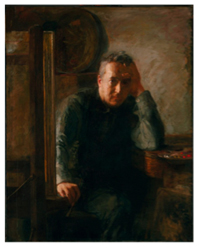
Thomas Eakins o/c by Susan McDowell Eakins
America is still rich with inventive spirit that animated Morse and even Thomas Eakins, the figurative painter from 1870's Philadelphia.
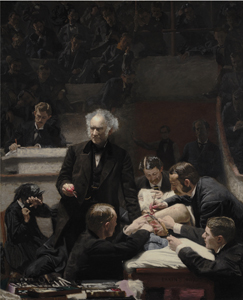
The Gross Clinic
Doubtless you know his masterpiece, “The Gross Clinic” where he paid homage to a brilliant surgeon.
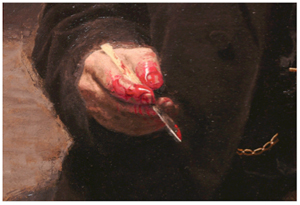
detail: Gross’ bloody hand w/ scalpel
The artist’s skilled hand honored the surgeon’s skilled hand.
Eakins was passionate about drawing skill as this drawing shows:
(slide: perspective dwg Biglins in scull/oil ptg. Biglins)
Perhaps you know that Eakins delved into photography. Initially he took photos as references for a number of his canvasses.
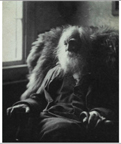
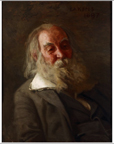
Eakins: photo / oil portrait of Walt Whitman
His zeal for photography let him to champion the work of in stop motion photography pioneered by Eadweard Muybridge.
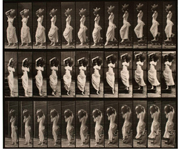
Muybridge: woman descending stairs
Eakins looked for ways to improve Muybridge’s shooting strategy.
Muybridge’s approach was cumbersome as he used rows of cameras. Eakins invented a system where he exposed multiple instants of continuous action onto a single negative plate.
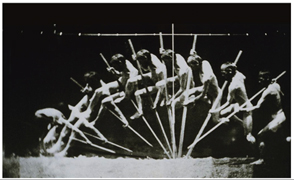
Eakins. Man doing long jump
For that he may have been dependent somewhat on the advances of Gustave Marey. However, Eakins went a step farther by inventing a revolving shutter with apertures around the perimeter of a disk inside the camera.
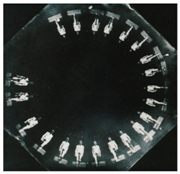
Eakins: circular image plate
Thus he could efficiently get multiple views into a single plate.
Soon after, another Thomas, Thomas Edison took this technology to the next step and invented the movies. Thomas Eakins had added a vital step to that progression! With Eakins we have another example of an artist passionate about drawing and empowered to direct his creative, analytic thinking into other spheres.
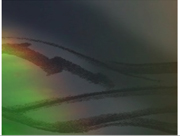
Blank screen color shapes
Are the realms of art and technology so separate? Have we bought too much into a paradigm of professions so highly specialized that the skills in one field are not transferrable to another? I hope we can take a broader view of the way an exceptional artistic talent is molded.
We can and will produce more American da Vincis if we continue to teach observational drawing. Exalting the computer is not enough. We can and will produce more American artists emboldened to pour out their unique spirits beautifully into canvas and clay even if results are non-representational. Why? Because they will have command and create from strength, understanding and skill. Artists who can draw never have to hide behind smokescreen rhetoric that drawing doesn’t count.
As for contemporary artists who draw with command the nation has somehow produced sterling talents who are re-invigorating tradition.
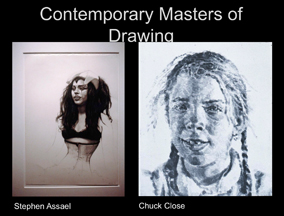
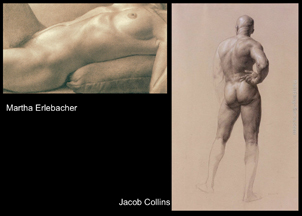
Contemporary masters of Drawing
They are artists like Stephen Assael, Chuck Close, Martha Erlebacher, Jacob Collins,
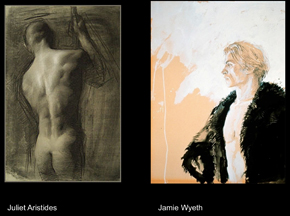
Juliet Aristides, James Wyeth,
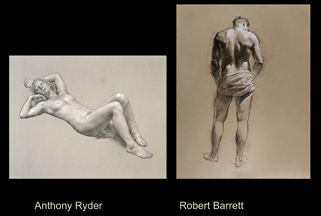
Anthony Ryder, Robert Barrett and many others. They embody a deep commitment to observational drawing.
So where does this debate leave us? I hope that my arguments might be considered seriously. I hope that Drawing will always remain where it belongs, as the fulcrum on which artistic development hinges. If we push it into the periphery, we risk losing vitality in both our artistic and material progress.
Should Drawing stay as the gateway course for art majors?
Draw you own conclusion.

